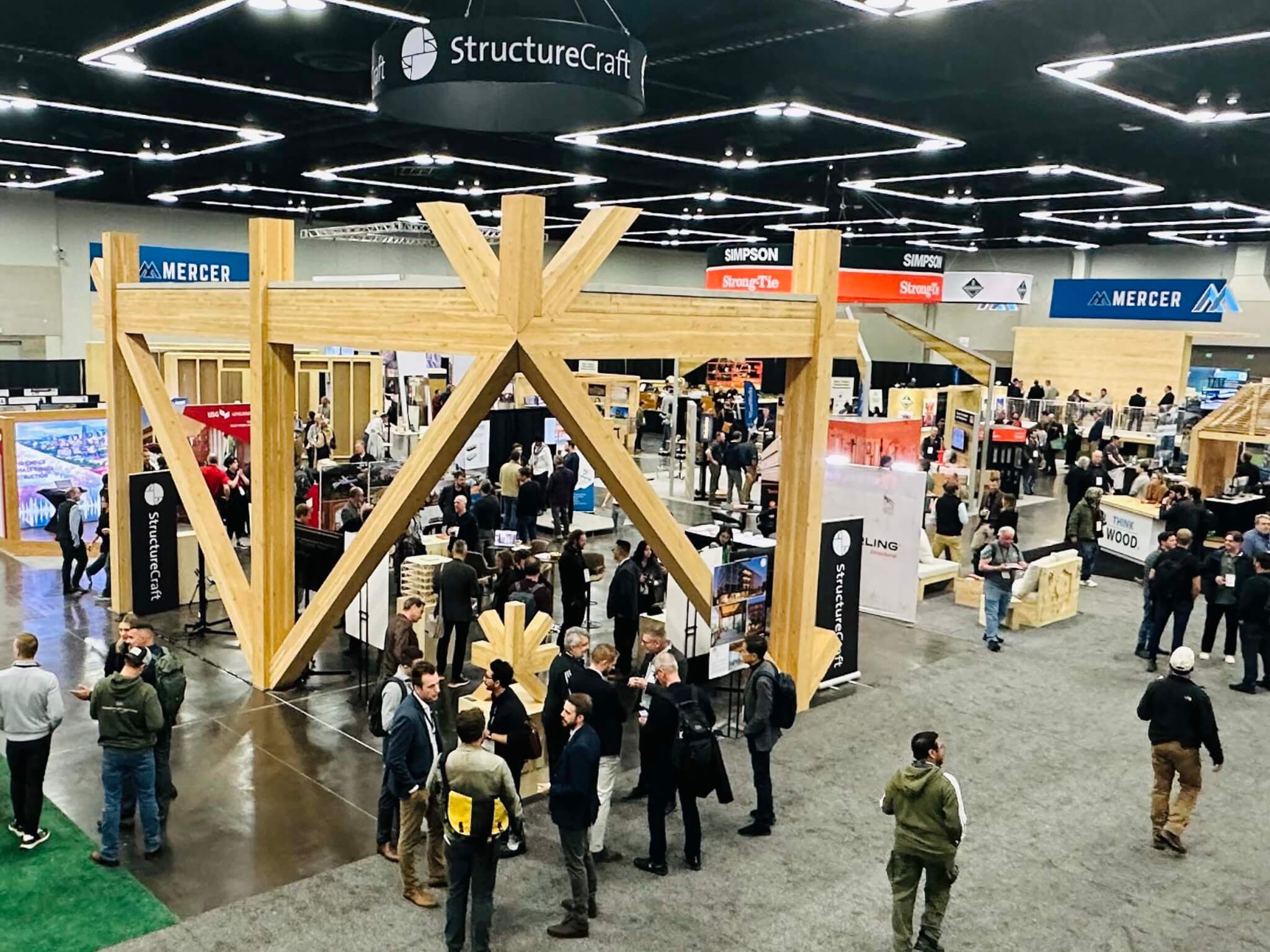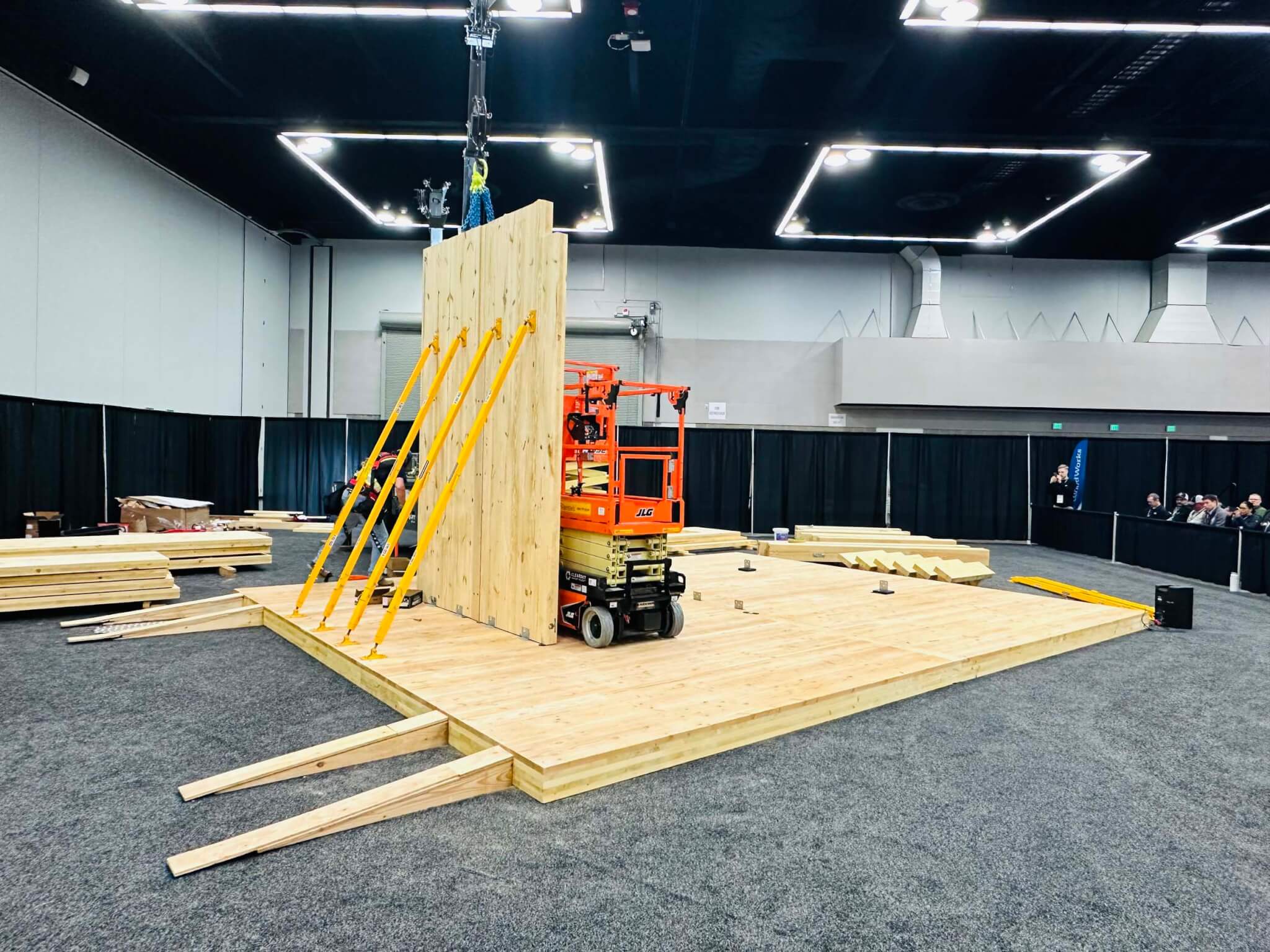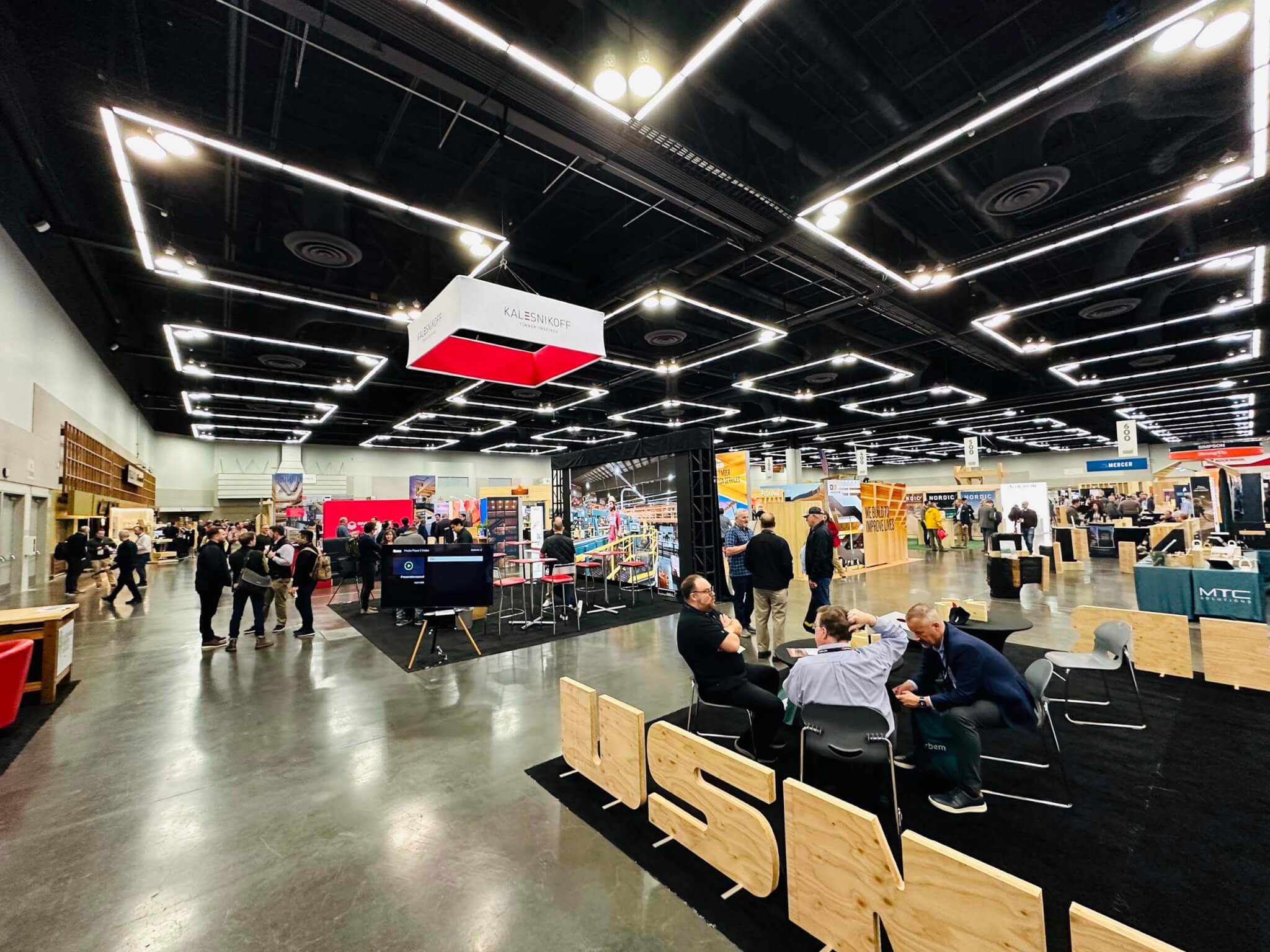The spirit of mass timber is the ethos of Portland: There’s no better place for this conference than the City of Roses. For the eighth year in a row, the world’s largest gathering of mass timber experts and stakeholders assembled for the 2024 International Mass Timber Conference (IMTC) at the Oregon Convention Center. Pre-conference events held on March 26 provided context for the two-day agenda to follow, with local building tours and crash courses in both mass timber basics and recent advancements in research.
In cooperation with the wood design experts at WoodWorks-Wood Products Council and with the support of sponsors including the Urban Land Institute (ULI) and the U.S. Forest Service, the event casts a wide net. Conference attendees learn how timber promotes community through design, manufacturing, and a shared love of craft in sustainably sourced, biogenic material. This is a feel-good conference led by makers that grows approximately 30 percent each year, on average. After-conference events hosted by StructureCraft and WoodWorks, among others, supplemented programming with relationship building beyond ballroom pre-functions, networking breakouts, and the exhibit halls.

Hosted by WoodWorks on Tuesday, a “Comprehensive Introduction to Mass Timber Design” answered many questions about the supply chain. From speed of construction, market distinction, leasing velocity and client interest to sustainable forestry, speakers from the nonprofit answered the Why? and the How? behind mass timber. The WoodWorks team described major considerations, including the importance of early commitment across all trades and project stakeholders, construction type, MEP integration, fire testing, acoustics, and moisture mitigation planning. With mass timber, we can achieve lower embodied carbon, consume fewer fossil fuels, avoid process emissions, and promote extended carbon in storage products and sequestration. A welcome reception hosted by Timberlab, Kallesoe Machinery, Kalesnikoff, Western Archrib, Maxxon, Mercer, XL Construction and SmartLam capped pre-conference events.
Wednesday morning opened with a tribute to WoodWorks and their commercial and multifamily wood building design, engineering, and construction. The following panel, moderated by Ian Galloway, a regional banking executive, titled “Will Mass Timber Reshuffle Our Economy?” included a provocative roundtable discussion concerning industry barriers, public and private investment, developer lessons learned, zoning reform and mass timber tech. The panel touched on the value of economic development corporations promoting mass timber through accelerator programs and further described a “dual mandate,” a necessary mindset that suggests that we must all accept risk in order to deliver timber projects and expand the constituent pool supporting the industry and an inclusive career pipeline. Speakers included Angela D. Brooks, president and director of the American Planning Association and Corporation for Supportive Housing; Todd Bayreuther, product director and research professor at Mercer Mass Timber, Washington State University; Noel Johnson, developer at Conrad; and Sheba Person-Whitley, regional director at the U.S. Department of Commerce, Economic Development Administration. The optimistic exchange zoomed in and out of recurrent themes: radical partnerships, adoption strategies, female leadership, economic opportunity, and perhaps most importantly, mass timber’s role in solving the housing crisis.
Panels throughout the day echoed a similar cross-section of participants and touched on an array of topics, from tall timber trends, contingency and cost planning, incentivization and policy to seismic design and and financing. Wednesday ended with a “Fireside Chat” with ULI concerning developers and the mass timber ecosystem, moderated by Andrea Newton, its executive director. Hines’s origin story was reiterated, along with details and representative projects comprising its T3 building model for “positive change.” The international model blends timber, transit, and technology to achieve best-in-class building performance. The platform has pioneered the future of commercial mass timber buildings and supports a wellness-inspired tenant experience.

Jonathan Pearce, head of investments, offices, and life sciences at Ivanhoé Cambridge, introduced the concept of “Real Alpha,” referring to mass timber’s multifaceted role in accelerated construction, environmental and social sustainability, user experience, value compression, differentiation, and legitimizing a “green premium.” Susan Croswell, project delivery principal at HDR, also touched on mass timber and integrated project delivery—a seemingly perfect delivery method for shaping team mindset. The IMTC Steering Committee and its co-producers, who are jointly responsible for the educational agenda, really excelled in setting the stage for relevant discussions.
Sponsored by Skanska, the highlight of the conference didn’t explicitly concern mass timber but rather the ethos in its surrounding air. It was delivered by Emily Pilloton-Lam, founder and executive director of Girls Garage—a nonprofit design and construction school for girls and gender-expansive youth ages 9-18. Emily’s story, and what she has accomplished in the way of supporting the career pipeline for women in design and construction, is trailblazing. Girls Garage is an analogue for mass timber’s potential social impact. Based out of West Berkeley, California, Girls Garage and its participants have created more than 190 community projects. Emily teaches us that the process of building, cultivation of craft, and investment in community provides a means for next-gen leaders to reframe power, locate creative voice, and center identity through activism. Her powerful talk was followed by simultaneous activities: the Women in Timber Power Hour; a networking break sponsored by the Sustainable Forestry Initiative; and a live construction demonstration.

Afternoon panels on Thursday continued to fascinate. The first track provided insight into global perspectives around mainstream adoption and models for project success, from The Netherlands to Baltimore. Leon Rost, partner at BIG, presented multiple projects, including The Village, a 150,000-square-foot student center for John Hopkins’s Homewood Campus. Lucas Epp, vice president and head of engineering at StructureCraft, described Branch 3D, their parametric software tool that enables real-time performance updates and speedy execution of shop drawings via a user-friendly interface. Lucas further detailed StructureCraft’s unique business model that strives to unify design and manufacturing in a delivery method they call “Engineer-Build,” which draws on the historical Master Builder distinction. StructureCraft’s sense of responsibility for all the steps of engineering and construction not only brings immense value to the industry but also supports entire project teams in a shared purpose to provide creative, buildable solutions with competitive material sourcing.
Concurrent tracks covered other hot topics, including productization and AI for carbon neutral urban housing, risk management, carbon accounting and reuse, tenant perspectives, regulatory challenges, and transparency in forestry. The 2024 IMTC was the most inspired conference I’ve been to in 20 years, and I can’t wait to see if it will exceed 30 percent growth next year. Given the conference’s track record and the continuing interest in mass timber across the supply chain, expect no less passion in 2025.
Allan Horton is a Brooklyn-based writer, digital creator, and architect. He is the corporate and commercial practice leader of Perkins&Will’s New York studio.

